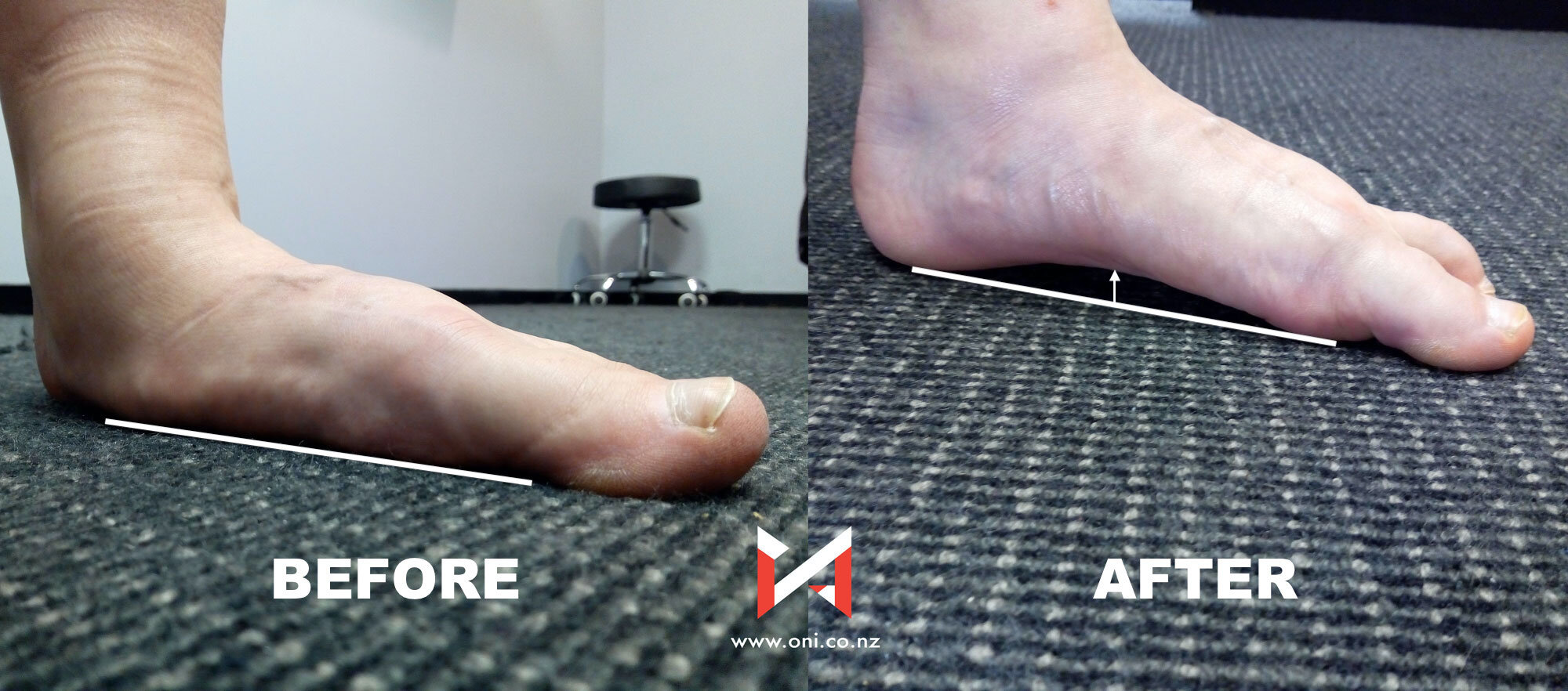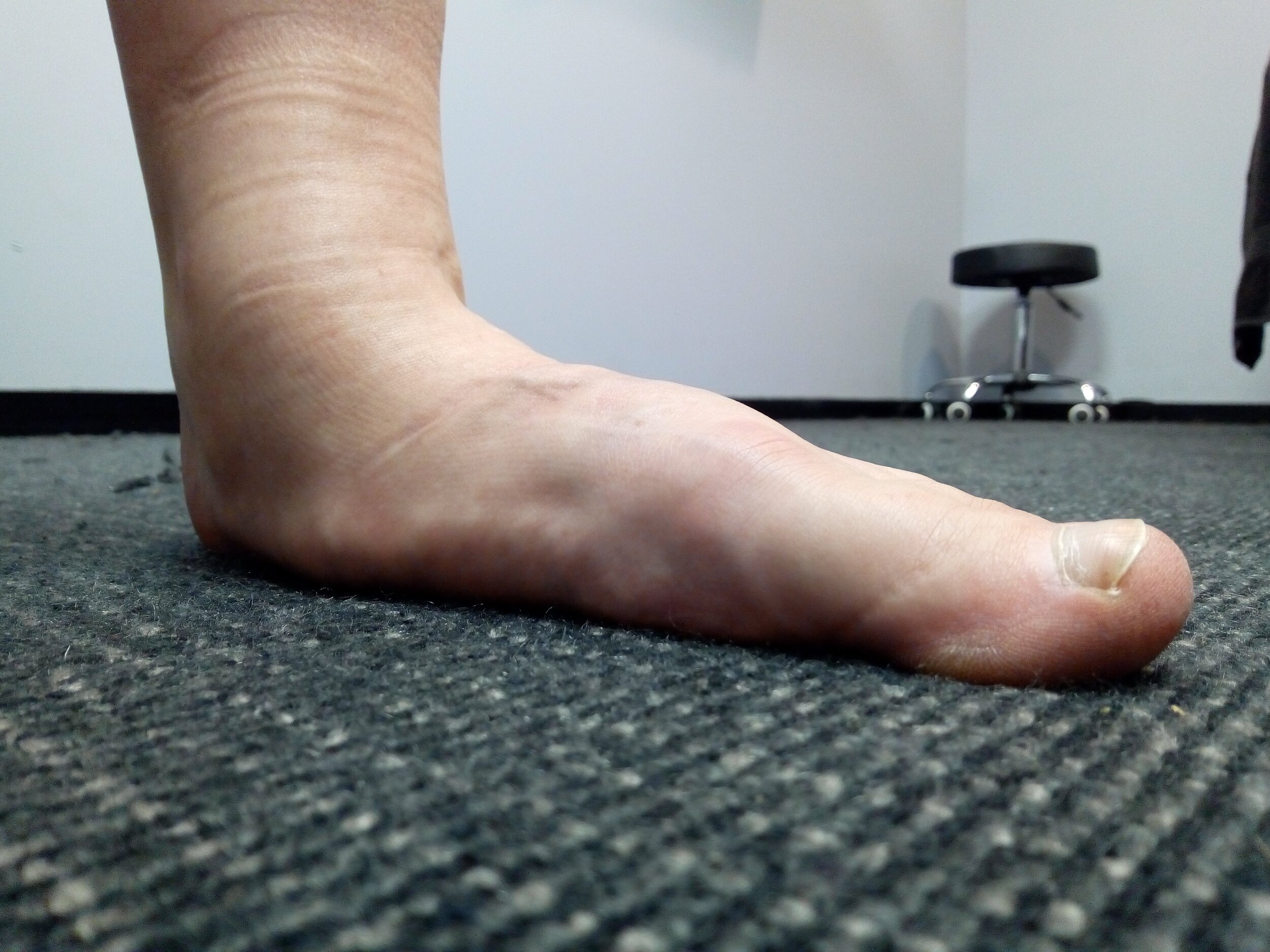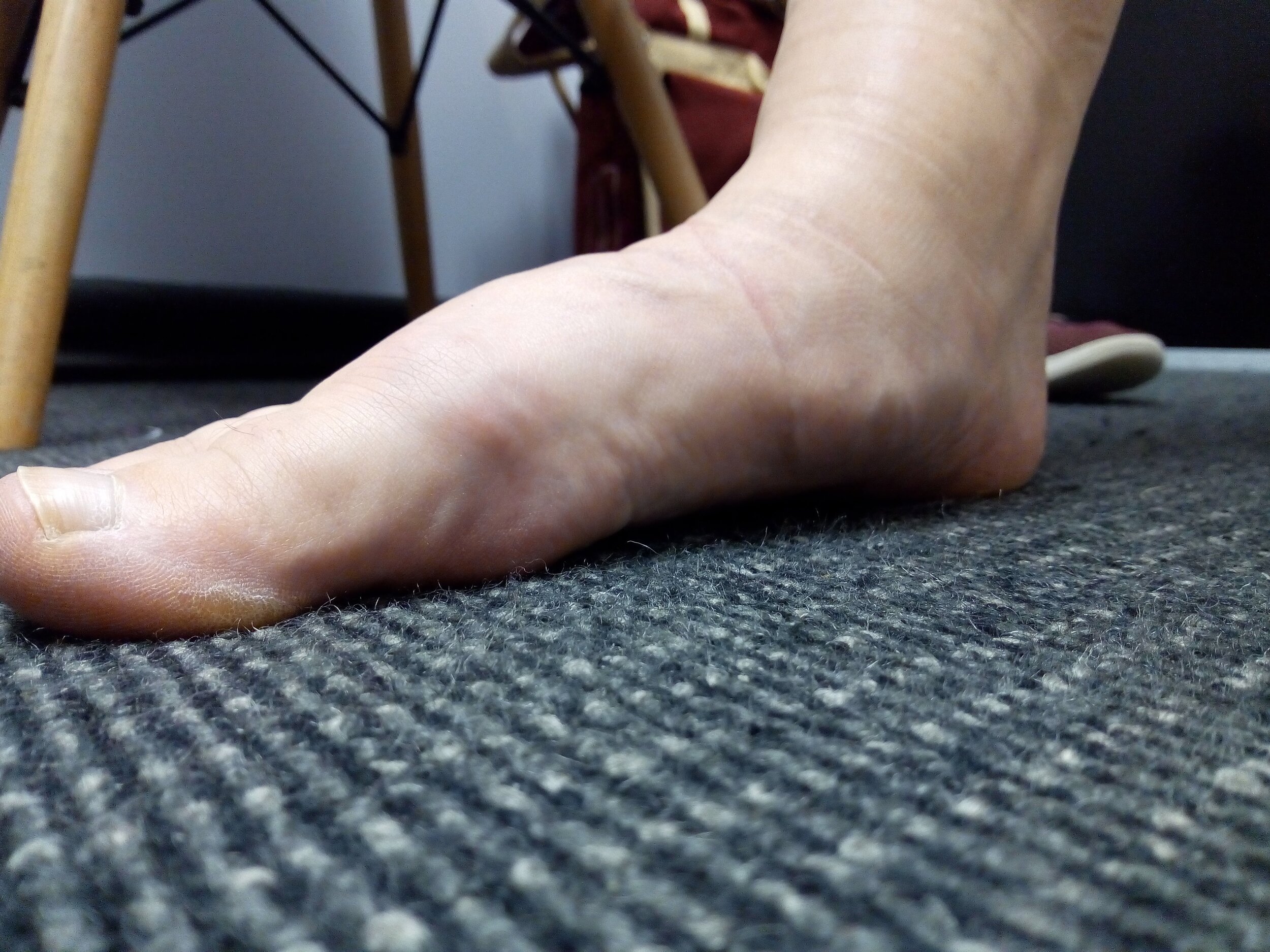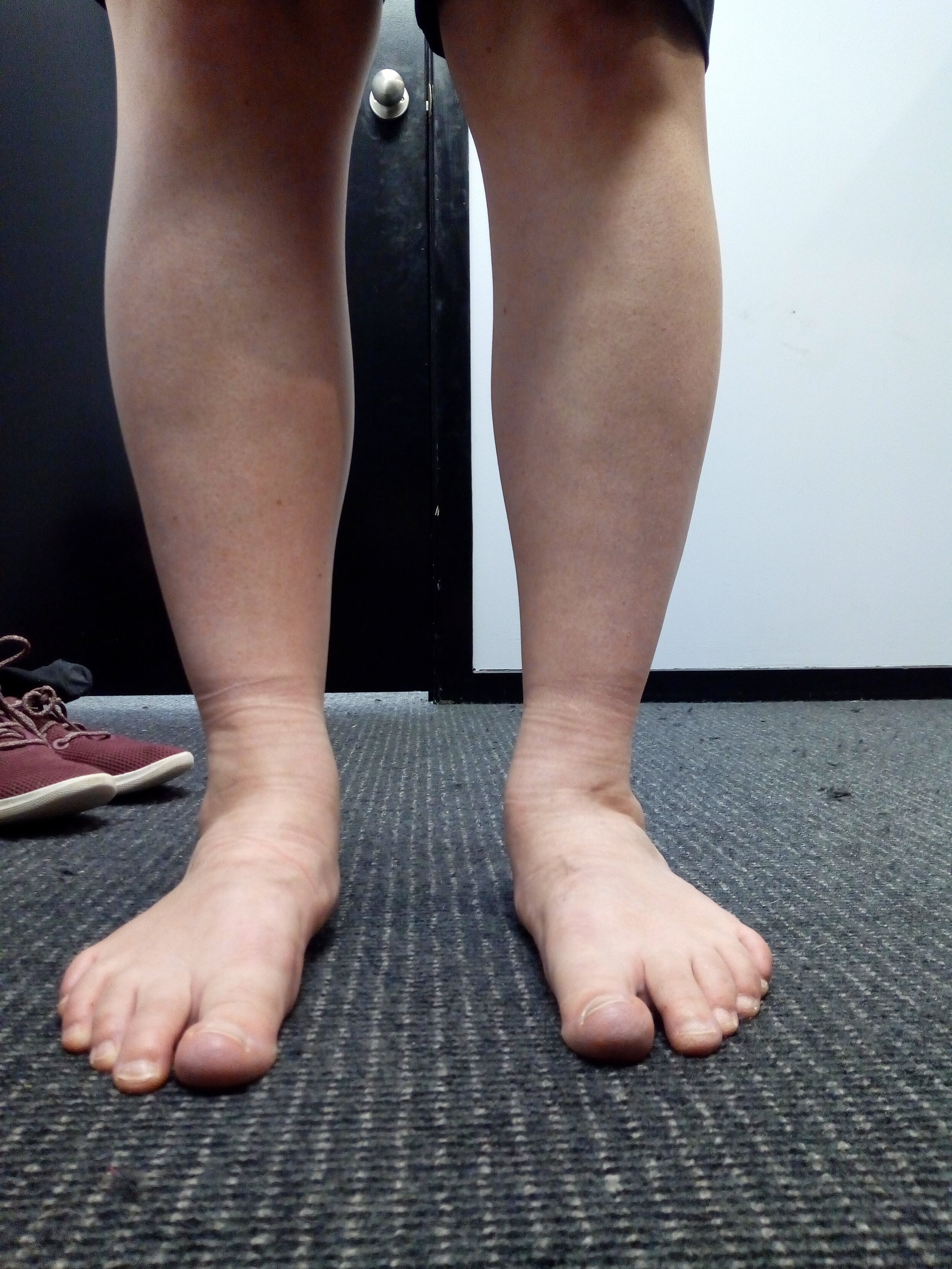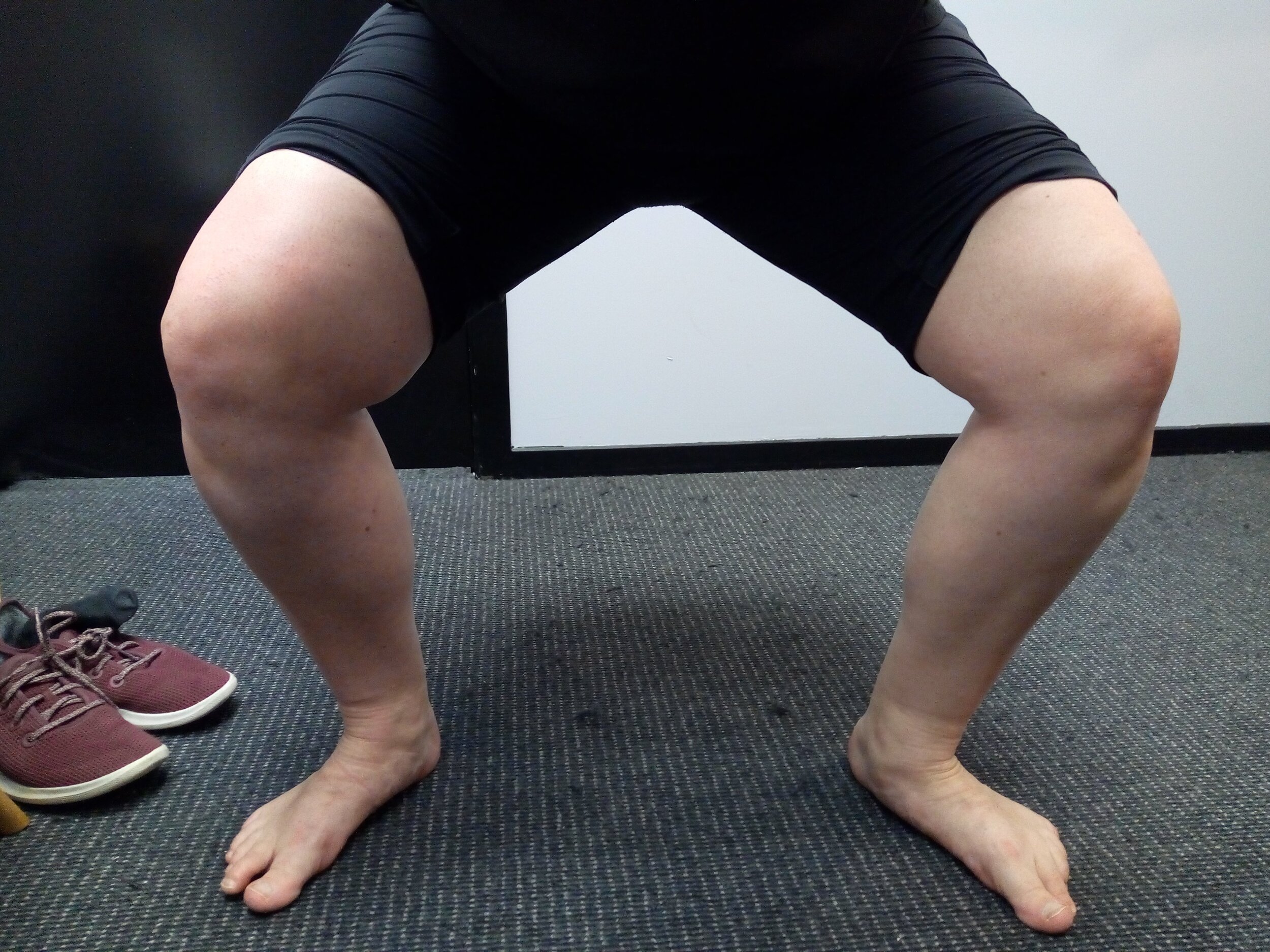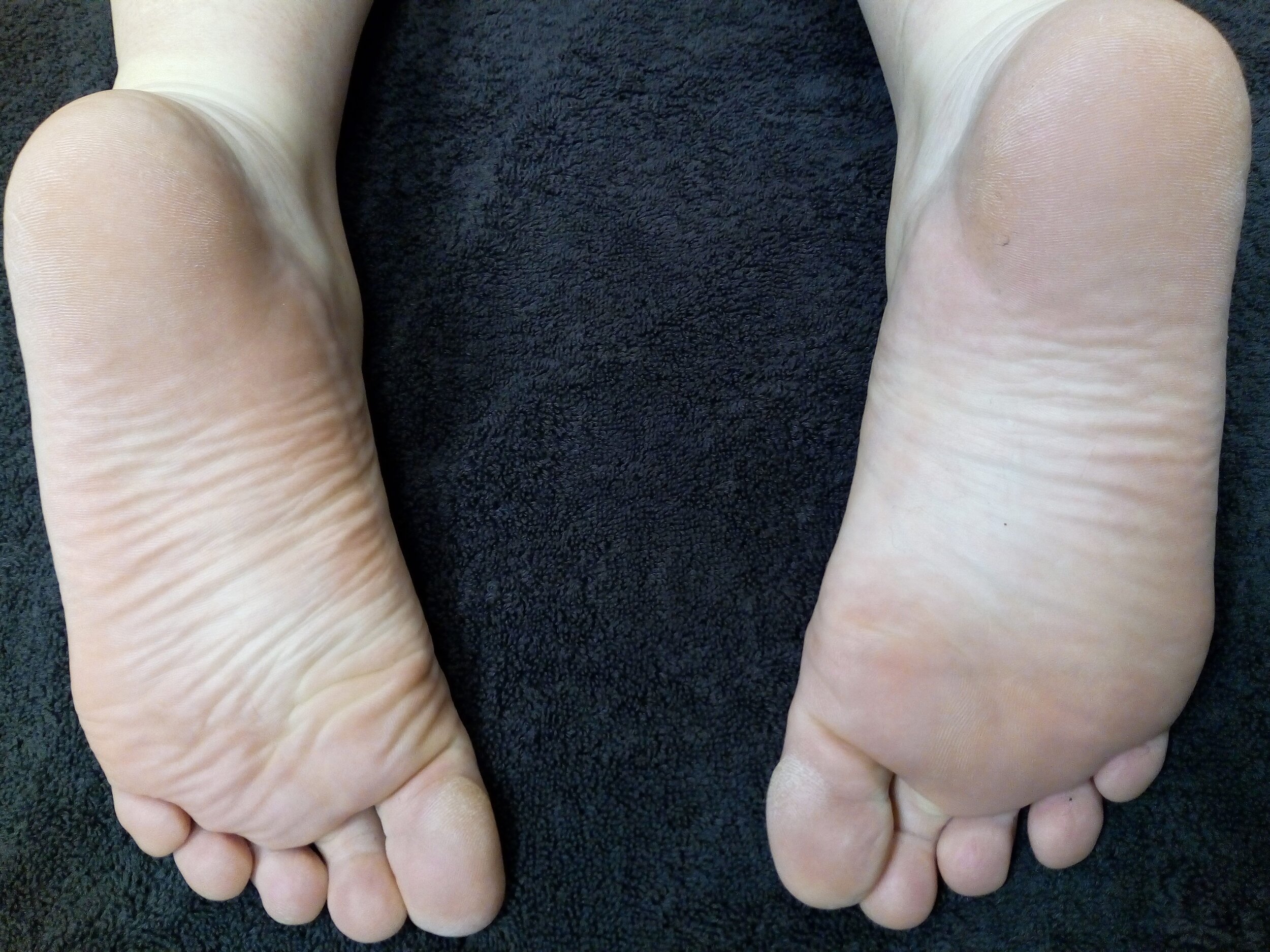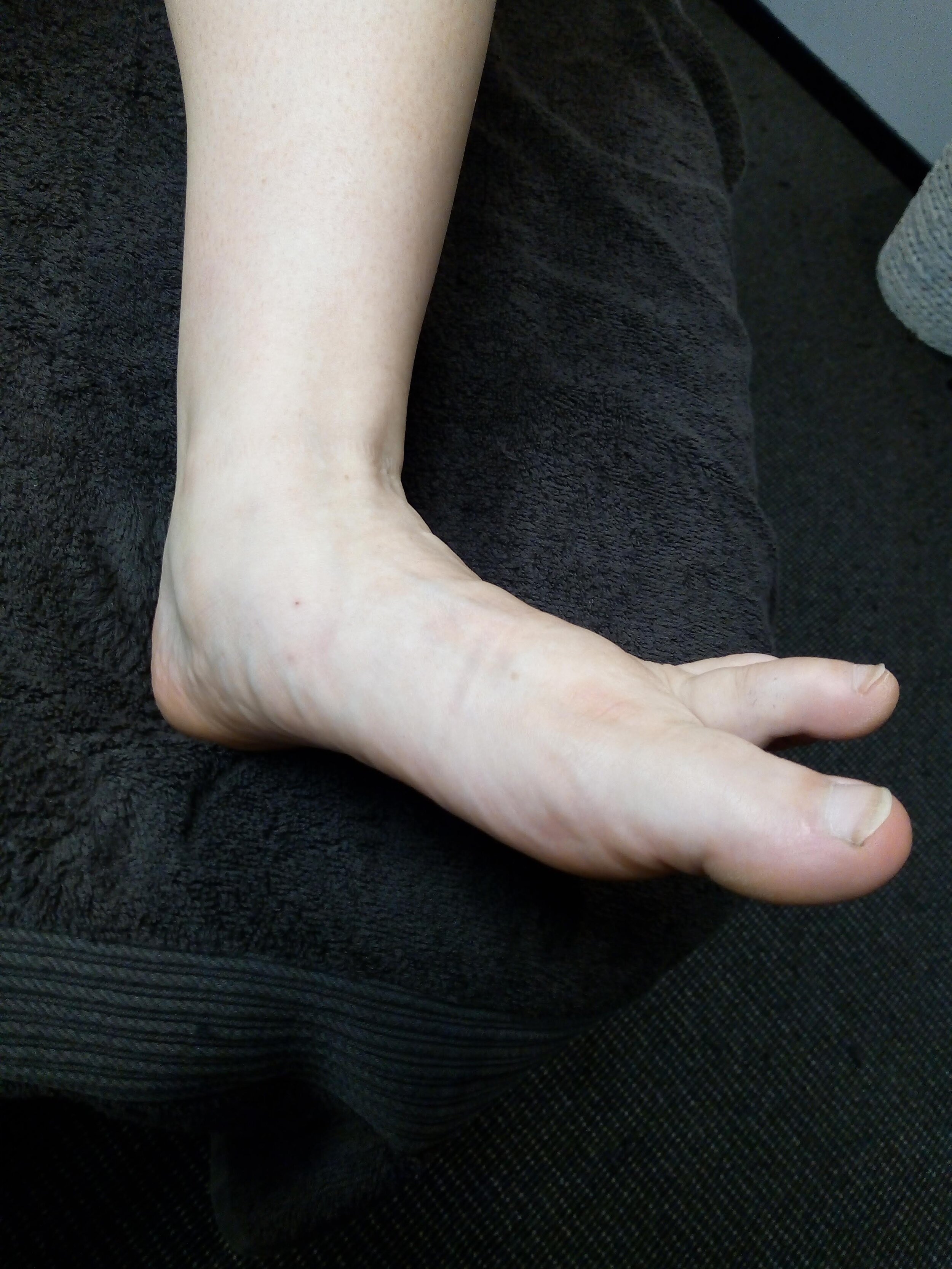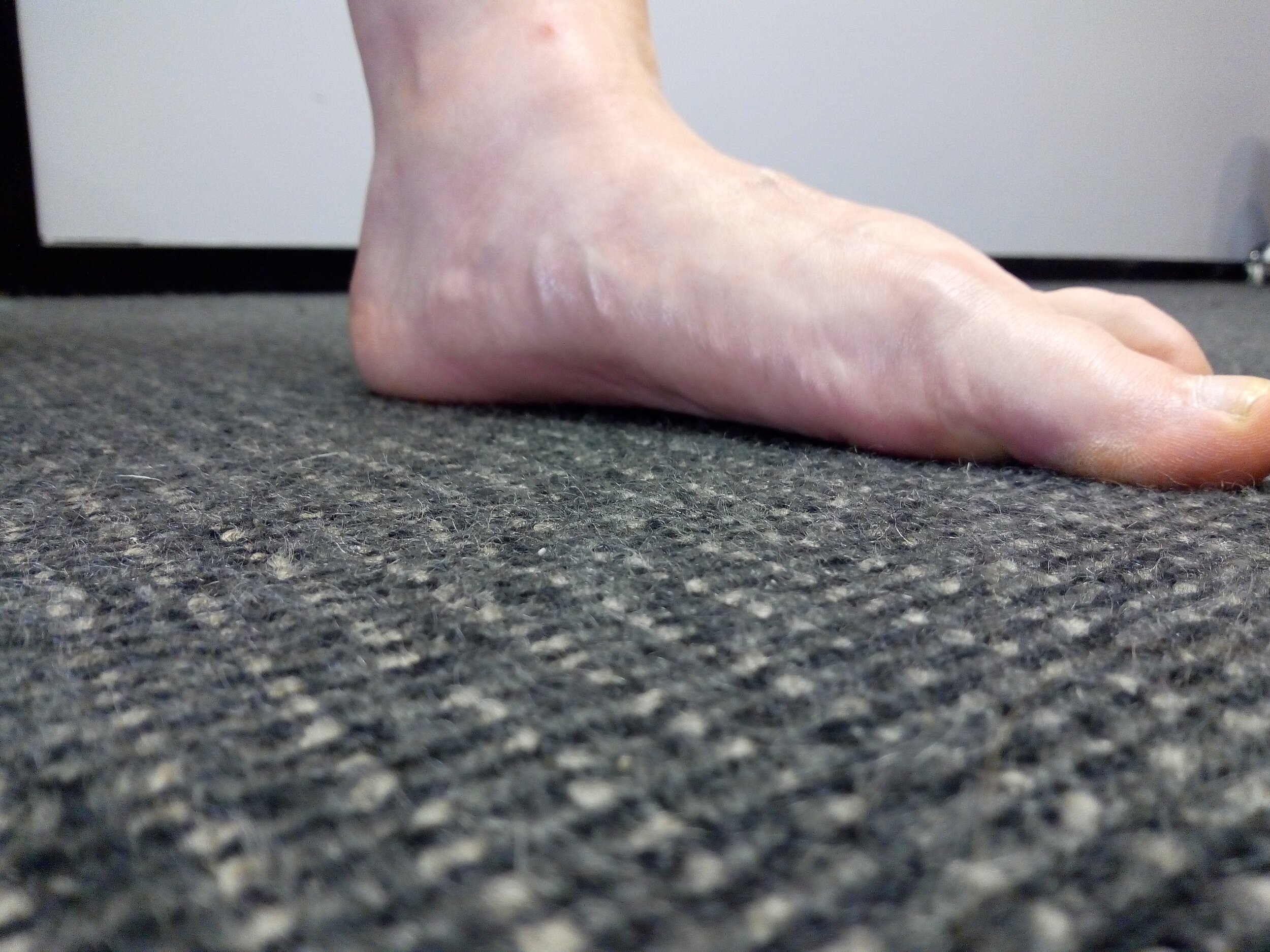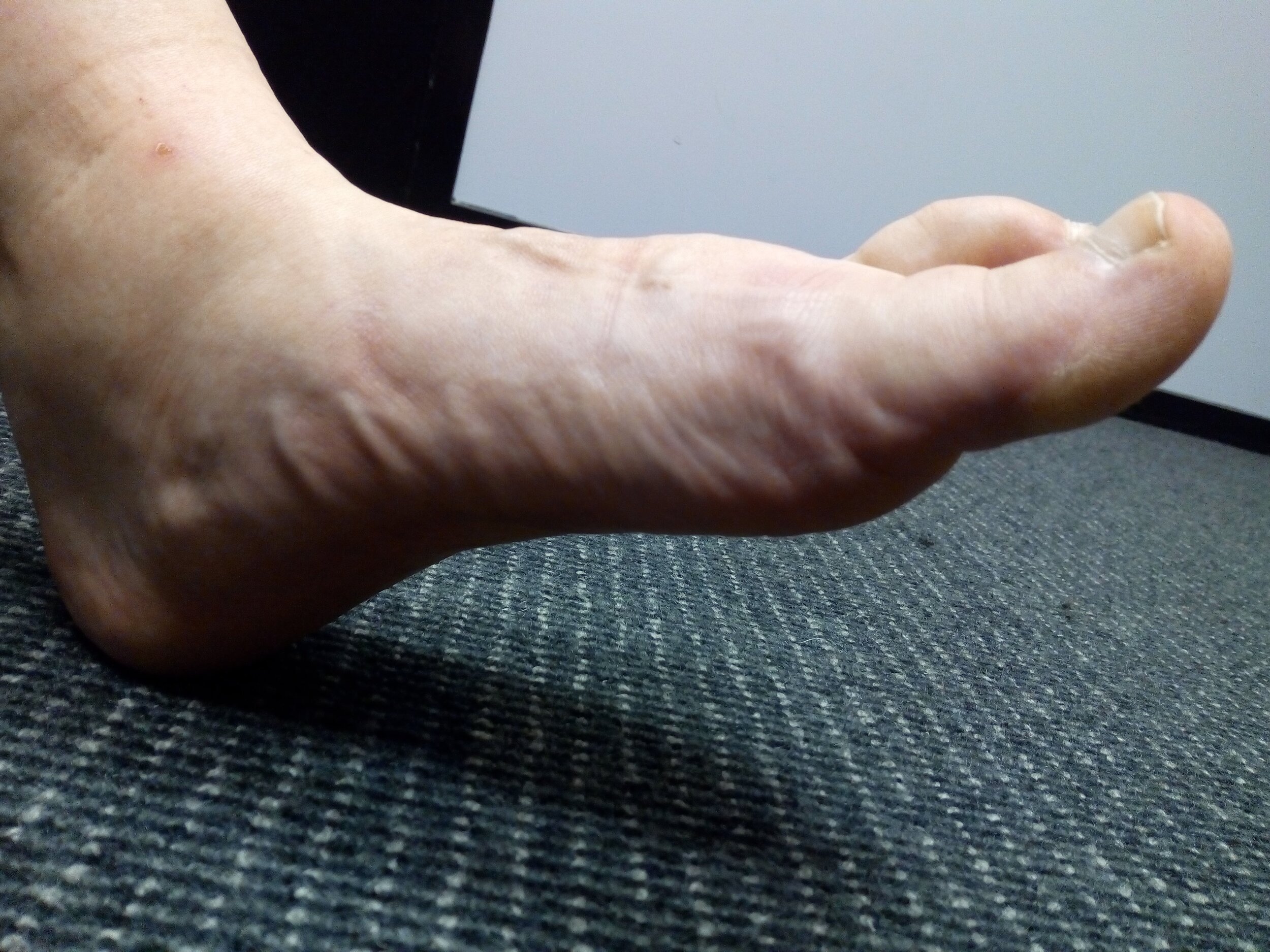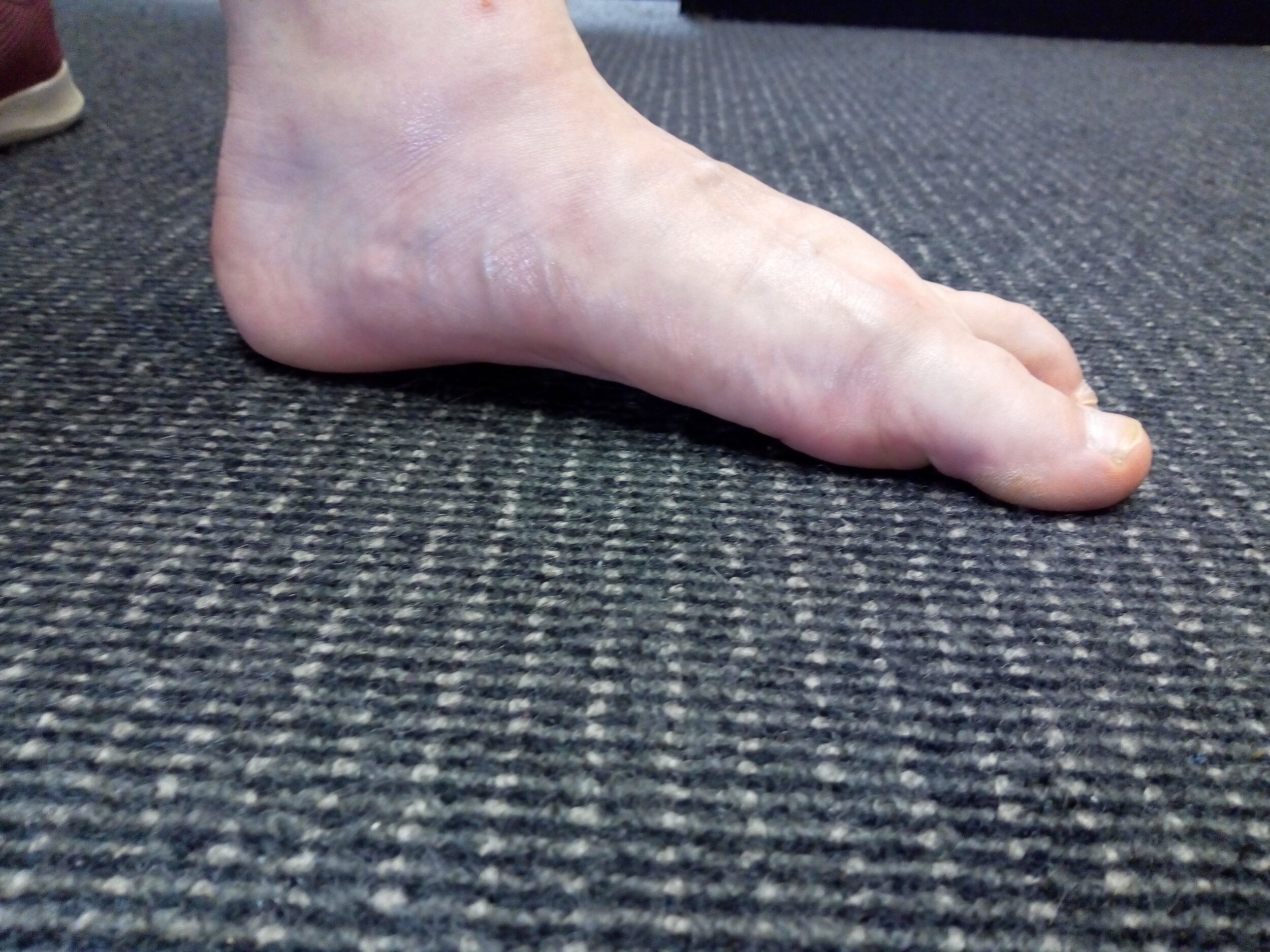Flat Feet Case Study With Kirill Volkov
Flat Feet Case Study
Quicklinks:
What is this case study about?
This case study is about educating a person with flat feet about the basics of foot arch mechanics, using manual therapy to increase their proprioception and control of some of the main muscles involved in creating the arch, and prescribing exercises for strengthening those muscles, all leading to an improvement in their foot arches.
What is flat feet?
Flat feet is the collapsing of the foot arches causing the entire soles of the feet to come into contact with the ground. This reduces the elasticity and springiness of the foot leading to inefficient energy transfer between the foot and lower leg during movement.
Who is the case study?
Vicky, a 32 year old office worker with a sedentary job in a high stress environment. She has started a regular morning yoga practise and also likes to do weight training at the gym after work. Vicky gets occasional cramps in her feet and has always known about her flat arches but now she has started noticing that it affects her balance when doing yoga or performing exercises such as squats. She has been learning about this issue and wants to improve her flat feet.
Assessment
We started with a ‘broad’ test to check if there were any imbalances in Vicky’s posture, that could be related to the flat arches of her feet. We noted immediately that her left foot was considerably more flat than her right foot. I tried to cue Vicky into an arch in each foot but she couldn’t hold it neither sitting nor standing.
Then we checked the arches of both feet in different positions to see how Vicky’s body responded to variances in load - seated, standing on one leg, while performing a squat, and lying down. The left arch was consistently more flat than the right one. In single legged position, Vicky could keep balance standing on her right leg but not on the left.
Next we narrowed down our test to just two main muscles involved in creating the arch - tibialis posterior and peroneus longus. We tested tibialis posterior by doing inversion of the foot and peroneus longus by doing eversion. The range of motion for inversion was about the same for both feet while eversion was more restricted in the left foot. I noticed that when I asked her to create eversion at the ankle she instead rotated from her knee, indicating a lack of control in eversion.
In order to help Vicky to develop the arches, first we needed to increase her proprioception and control of the tibialis posterior and peroneus longus muscles with manual therapy, and then to strengthen them with exercises.
Session Notes:
Week 1
I explained the basics of foot arch mechanics to Vicky and we went through the initial assessment. I performed massage therapy of tibialis posterior and peroneus longus muscles.
On the left side Vicky felt 8/10 in tibialis posterior and 8/10 in the top third of peroneus longus. She also got a slight cramp in the left foot at the start of the manual therapy session.
On her right side, Vicky felt 6/10 in tibialis posterior and 6/10 in the top third of peroneus longus. During active release, Vicky’s control was much better on her right side.
I checked Vicky’s arches again after the manual therapy. Seated, they both looked slightly higher, while standing both collapsed to how they were during the initial assessment.
Vicky’s homework for this week was to practise inversion/eversion of the foot 3 times per day, 10 reps on each side.
Week 2
Vicky reported doing the homework from the previous session consistently over the past week and when she demonstrated inversion/eversion, I immediately saw an increase in the range of eversion in her left foot. However, she was still rotating the lower leg at the knee. I prompted her to lock the knee, keep the shinbone straight and only invert/evert at the ankle. It helped her realise that she had been compensating by rotating the lower leg and knew she had to focus on isolating the movement at the ankle. I noticed she engaged her toes when doing eversion with the left foot and cued her to relax the toes as they were not required for eversion.
Massage therapy: passive and active release of tibialis posterior and peroneus longus.
Left side tibialis posterior 8/10 and good control of inversion during active release but less controlled towards the end of the range. Peroneus longus 8/10 and good control of eversion during active release.
Right side tibialis posterior felt much softer than on the left. Peroneus longus seemed tight and stringy, Vicky felt 7.5/10 at first but very quickly went down to 6/10, she also felt the lower part at around 4/10.
Re-checked inversion/eversion and Vicky only moved at the ankle (not at the knee) and toes were relaxed.
Homework: inversion/eversion as last week but really focusing on isolating the ankle, not rotating at the knee, and not engaging the toes. Leg can be supported on a chair. 3 times/day, 10 reps on each side.
Week 3
Vicky said she had been doing the homework daily and felt occasional cramps in her left foot. I reassured her that cramping is a good sign and it’s an indicator that she is using the muscles she hasn’t used much before. I asked Vicky to demonstrate inversion/eversion with each foot and she did it really well, only moving from the ankle and not the knee. She still tried to engage her toes but quickly realised that and relaxed them. I could still see a more restricted range of eversion in her left foot.
I used a T-bar to massage tibialis posterior and it felt more tender to Vicky than peroneus longus on both sides and she felt it a bit lower in the leg than last week. Peroneus longus was no more than 5/10 on either side.
I wanted to see if Vicky could hold the arch on her own while she was sitting down, so I cued her into it and asked to hold. Her knuckle lifted as soon as I removed my hand but she could keep it down when I prompted her. I could see her peroneus longus activate when she was putting the knuckle down. We did this on both sides. Vicky said that she was feeling a new sensation on the front of her shin.
For homework, I asked Vicky to practise foot pump sitting down focusing on keeping the knuckle down, and suggested placing a coin under it to make sure it was touching the ground (coin). 3 times/day, 5-10 reps, holding each rep for 20-30 sec.
Week 4
As always, Vicky has been practising homework regularly and I could see that was really motivated. This session I wanted to focus on coaching Vicky to hold the arch while she was sitting down. I made sure her lower leg was vertical (knee at right angle and not rotated), foot pointing straight, then with my hand that was holding the ankle, I moved her knee out a little (with rotation), and with the other hand created a very high arch first and then pressed down on the knuckle (not toe). We practised this several times on both feet and Vicky really got the hang of it.
We spent less time on massage in this session and I only massaged her left leg and foot. Tibialis posterior was about 5/10 and peroneus longus 8/10.
We repeated the arch holding exercise and Vicky could actively create an arch when sitting down. When she tried to do it standing up, the arch collapsed immediately.
I asked Vicky to repeat the homework from last week and add some reps to try to do the foot pump standing as well.
Week 5
Vicky could create and hold the arch without any cues demonstrating really good control. I explained, that now the main focus was going to be on building and increasing strength.
We repeated the coaching from last session, only now I asked Vicky to hold the arch in both feet at the same time, and we also tried increasing the load by getting Vicky to stand up slowly while holding on to something to gradually increase the weight. Even when fully standing, the arch looked slightly higher than last week.
During the massage Vicky told me that it felt more like it was now targeting the working muscles not just odd spots. That was another good sign of her increased proprioception and control of the muscles involved in creating the arch. She also said she felt less tension in the feet after the massage.
I asked Vicky to try creating and holding the arch while putting partial body weight onto her feet as she did at the start of the session and she did it well. This was her homework for the week, 3 times/day, 5-10 reps.
Week 6
Vicky said she was still feeling occasional cramping around her left ankle and she knew it was a good sign. The arch in her left foot looked really good when she was sitting down and she told me it now felt like a new normal, this was now her relaxed pose. I was very pleased with such result and so was Vicky.
We also looked at her standing arch which was now much better compared to how it was before.
I wanted to spend more time on exercises this session, so I did a quick flush of her lower legs, ankles and feet.
I showed Vicky some variations she could use to vary the difficulty of the foot pump exercise. From a lunge position, I asked her to create and hold the arch while while keeping the front leg vertical, then move it closer or further away from her body to change the difficulty. I asked Vicky to incorporate these variations into her final homework.
Results
Vicky has increased range of motion and control while performing inversion/eversion with each foot.
Holding an arch in her left foot while seated now seems natural to Vicky.
When loaded with body weight, Vicky can activate and create a slight arch in her left foot (in the beginning she could not).
Vicky’s left arch has improved and both arches now appear more even.
Vicky’s feedback
“I was really excited to be part of the flat feet case study with Kirill and ONI as I never really understood the mechanics of why my feet are the way they are. Throughout the six weeks, Kirill was extremely patient and took his time educating me on the muscles that control the arch. Each session included manual therapy, which helped me better understand and activate the muscles that had been well and truly in hibernation. I also had ‘home work’ to do each week, which consisted of exercises that built on the ones from the week before culminating with me being able to control and strengthen the arch I didn’t know existed.
Initially my left foot was so flat my ankle was essentially ground level. Progressively, week by week I was able to control it better. By the last session it was more comfortable to sit with my foot resting with an arch than flat against the ground. It was a huge improvement! I aim to keep doing the exercises I was taught, and hopefully with time I will have an arch 100% of the time.”
Case Study Lead: Kirill Volkov
Supervisor: Laurent Pang
ONI Movement Coaching | Personal Training | Massage Therapy | Nutrition Coaching

